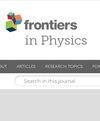光学清除:基于传播的相衬 μCT 的另一种样品制备方法
IF 1.9
3区 物理与天体物理
Q2 PHYSICS, MULTIDISCIPLINARY
引用次数: 0
摘要
基于同步辐射传播的相位对比显微计算机断层扫描(SRμCT)已被越来越多地用于组织标本的详细特征描述,以替代传统的组织学。它可以对未染色标本进行快速、无损的三维(3D)虚拟组织学检查。尽管许多研究表明,福尔马林固定和石蜡包埋(FFPE)组织标本的标准规程非常适合基于传播的相位对比成像(PBI),但针对这一相对较新的技术,对样本制备规程的改进仍处于早期阶段。使用 FFPE 块有几个限制,包括气泡夹杂和裂缝形成,这些都会影响显微 CT 扫描的质量。在本研究中,我们证明了结肠癌标本经光学清除后嵌入 Phytagel 作为替代样本制备方案,可获得与 FFPE 标本相当的 PBI micro-CT 图像质量,并能减轻 FFPE 标本的上述缺点。此外,由于用于 PBI 图像重建的单程相位检索算法预计扫描材料要么是弱吸收材料,要么是吸收与相移之间具有固定比率的材料,因此我们假设光学清除将导致标本完全符合所应用的相位检索算法的数学假设(强度传输方程 TIE-HOM 的均质形式)。此外,我们还证明,将标本重新包埋在石蜡中后,仍然可以进行经典的组织学分析。因此,利用 SRμCT 扫描光学清除标本的新型工作流程可与光片显微镜结合使用,并可集成到病理组织特征描述的经典流程中。本文章由计算机程序翻译,如有差异,请以英文原文为准。
Optical clearing: an alternative sample preparation method for propagation based phase contrast μCT
Synchrotron radiation propagation-based phase-contrast micro-computed tomography (SRμ μ
求助全文
通过发布文献求助,成功后即可免费获取论文全文。
去求助
来源期刊

Frontiers in Physics
Mathematics-Mathematical Physics
CiteScore
4.50
自引率
6.50%
发文量
1215
审稿时长
12 weeks
期刊介绍:
Frontiers in Physics publishes rigorously peer-reviewed research across the entire field, from experimental, to computational and theoretical physics. This multidisciplinary open-access journal is at the forefront of disseminating and communicating scientific knowledge and impactful discoveries to researchers, academics, engineers and the public worldwide.
 求助内容:
求助内容: 应助结果提醒方式:
应助结果提醒方式:


